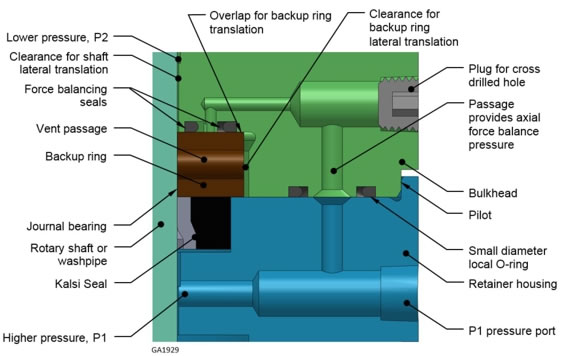Our online Seal handbook consists of individually revisable chapters, to facilitate updating, and to minimize file size. The handbook has now been updated to revision level 20.
The main reason for this revision was to update Chapter D17 to describe a much simpler floating backup ring design. This new arrangement uses simple stacked housings that are much easier to assemble, and considerably less expensive to manufacture, compared to the original cartridge-based design. The design is also more robust, because it entirely eliminates the use of radially sealing O-rings, which were the weakest point of the cartridge-based design.
We believe the stacked housing arrangement is the best way to implement Kalsi-brand rotary shaft seals in extreme high pressure equipment, such as high pressure washpipe assemblies, rotating control devices (RCDs), hydraulic swivels, side port cement swivels, and other side entry process fluid swivels. Section E shows how to use the stacked housing arrangement in high pressure side port swivels and washpipe assemblies.
Handbook revision 20 also includes updates to Chapters, C1, C13, C14, D1, D2, D6, D12, D19, and Appendices 1 and 3. These updates range from substantive technical changes to changes that are purely cosmetic or editorial in nature. For example, Chapter D12 now includes test data illustrating why we recommend against using grease with typical elastomer-type Kalsi-brand rotary shaft seals.
Chapter E2 is currently being revised to illustrate how to use the stacked housing arrangement in high pressure hydraulic swivel sealing, and Chapter C5 is currently being revised to provide additional rotary seal test data.

